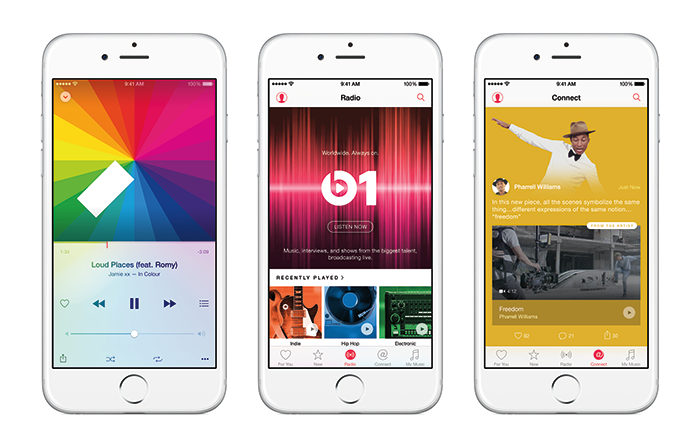
By
Ankitha Bharadwaj
It’s highly probable that I’m part of the last generation that remembers walking into a music store and purchasing a physical thing that plays music. Whether that’s vinyl, cassette tapes, or CDs, these tangible relationships we had with music are quickly fading away. With the days of mix tapes, burning CDs, and Napster long behind us, it’s time to accept the new digital media landscape.
Even Taylor Swift had to admit it: Paid subscriptions to streaming music service are the future. And there are so many gosh darn services to choose from. Just Google “streaming music services” and you’ll find links on links on links with feature comparison charts, and service specs, and celebrity endorsements (I’m lookin’ at you Dre and Jay-Z). It can be a bit overwhelming to figure out which service is best for you.
For most people, it tends to boil down to one of these two services: Pandora or Spotify. The appeal of Pandora is the “set-it-and-forget-it” model. You pick a song you like, and Pandora serves up similar songs. Seems simple enough for those who just want to get the music started and keep it going. Spotify is for the more fickle music-listener. It follows the “gimme-what-I-want-right-now” model. It’s all about control, curation, and on-demand playback. Folks who pick Spotify prefer listening to music on their terms–carefully selecting what they want to hear and when they want to hear it. I fall squarely in the “gimme-what-I-want-right-now” model. My poison of choice? Definitely Rdio. But let’s save that for another blog post.

Enter Apple Music
What I want to talk about today is Apple’s foray into the world of streaming music services. The much-anticipated Apple Music launched in late June and I was stoked. I started with the classic white Macbook in college, and escalated to two Macbook Pros, three iPhones, one iPad, and I’ve been strongly thinking about getting the Apple Watch (I know, I know…that’s so millennial). If there’s one thing Apple does best, it’s making sure its software and hardware work beautifully together. So naturally, I was excited about trying out Apple Music.
Being the user researcher that I am, I decided to evaluate Apple Music in a more structured way.
Study structure and recruiting
I asked a few of my friends to walk through the Apple Music first-time user experience while I looked on as a talkative fly on the wall. I came up with a quick script targeting four core areas of the Apple Music experience:
- Understanding the service and its features
- Getting to Apple Music on the PC or iPhone
- Signing up for an account
- Launching the app and exploring the content
I was curious to uncover more around the following questions:
- Do people understand what Apple Music has to offer?
- Do people understand how it’s similar to and different from their current streaming music service or digital music player?
- How easily can people find a way to get Apple Music running?
- How easily can people sign up for an account?
- What do people think of the first launch experience (personalization, content selection…etc.)?
- What do people want to do with content they find in Apple Music?
The six people I spoke with were a representative slice of the digital music consuming population. They were all active digital listeners of music that was either purchased or streamed online. Five of them had current subscriptions to streaming music services that they used to listen to music at least three times a week. All six had never used Apple Music before, but were very curious to know more about it.
What did I find out? The bulk of what I’d like to discuss is about just getting into Apple Music. There are significant barriers for entry that should send up gargantuan red flags for Apple.
Yikes! So let’s dig into what happened…in Part 2 of this blog post.
Ankitha Bharadwaj works in user research at Blink UX. She’s a doer and a trier, and spends her free time thinking about how we know what we know is, in fact, the truth.
